Subsea cable systems
Google’s Equiano cable system will span the west coast of Africa
First announced in 2019, the Equiano system is the third international submarine cable to be owned by Google and their fourteenth submarine cable investment in total. The Equiano cable system is expected to be ready for service by the end of this year.
It is named after Olaudah Equiano, an 18th century writer and abolitionist originally from what is now Nigeria. Enslaved as a child, Equiano purchased his freedom in 1766 and went on to play a major role in the British anti-slave trade movement of the 1780s.
The cable is set to span the West Coast of Africa, travelling from Lisbon, Portugal, down to Cape Town, South Africa, offering a myriad of branching opportunities to neighbouring African countries on the way. Branches already planned include those to Nigeria, St. Helena, Democratic Republic of the Congo, and Namibia, with many more likely to be announced later this year. Please see illustration below.
When previously announced, the system’s first African landing was expected to be at Lagos, Nigeria, but discussions between Google and the Togolese government – particularly surrounding the latter’s Togo Digital 2025 strategy, which aims to make the nation a regional digital hub – saw Togo’s capital Lome jump the queue.
Togo’s minister for digital economy and digital transformation, said her government successfully made the case to Google that it should be Togo instead.
“Togo, which was not on the list of beneficiary countries of the first cohort, was integrated after several months of negotiations and it becomes the first African country to host the cable,” said the Togolese Minister of Digital Economy and Digital Transformation, Cina Lawson.
“As Togo continues to earn its place on the regional and international stage as a digital hub and a favorable ecosystem for innovation and investment, our collaboration with Google and CSquared in successfully landing Equiano further demonstrates Togo’s commitment to enhancing public and social services for all citizens so that they can benefit economically.”
Lome is already a host to two submarine cable systems: the West Africa Cable System (WACS), which spans a similar route to Equiano but continues north to London, UK, and the shorter Maroc Telecom West Africa cable, which travels from Casablanca, Morocco, down to Libreville, Gabon.
The Equiano cable system will be maintained and operated by CSquared Woezon, a joint venture of open access wholesale broadband infrastructure company CSquared and the Société d’infrastructures numériques (SIN), a sovereign entity responsible for holding strategic assets in the telecommunications and ICT sector in Togo. The joint venture, in which CSquared holds a 56% stake, will also manage the related e-Government and Communauté Electrique du Bénin (CEB) terrestrial fibre networks in Togo.

According to Google, the cable system, which comprises 12 fiber pairs and a design capacity of 150 Tbps, should create roughly 37,000 jobs in Togo between 2022 and 2025, as well as boosting the nation’s GDP by $193 million.
References:
https://qz.com/africa/2143897/googles-equiano-cable-is-making-its-first-landing-in-togo/
IPS Expands Long Haul Submarine Data Transmission Capacity with Ribbon’s 100 Gigabit Ethernet (100GbE) services
Ribbon Communications Inc, a global provider of real time communications software and IP Optical networking solutions to service providers, enterprises, and critical infrastructure sectors, today announced that Tokyo based IPS (a leading provider of international connectivity services for communications service providers), is using Ribbon’s Apollo Optical Networking solution to power 100 Gigabit Ethernet (100GbE) services delivered over both terrestrial and undersea cables from Manilla to Hong Kong and Singapore.
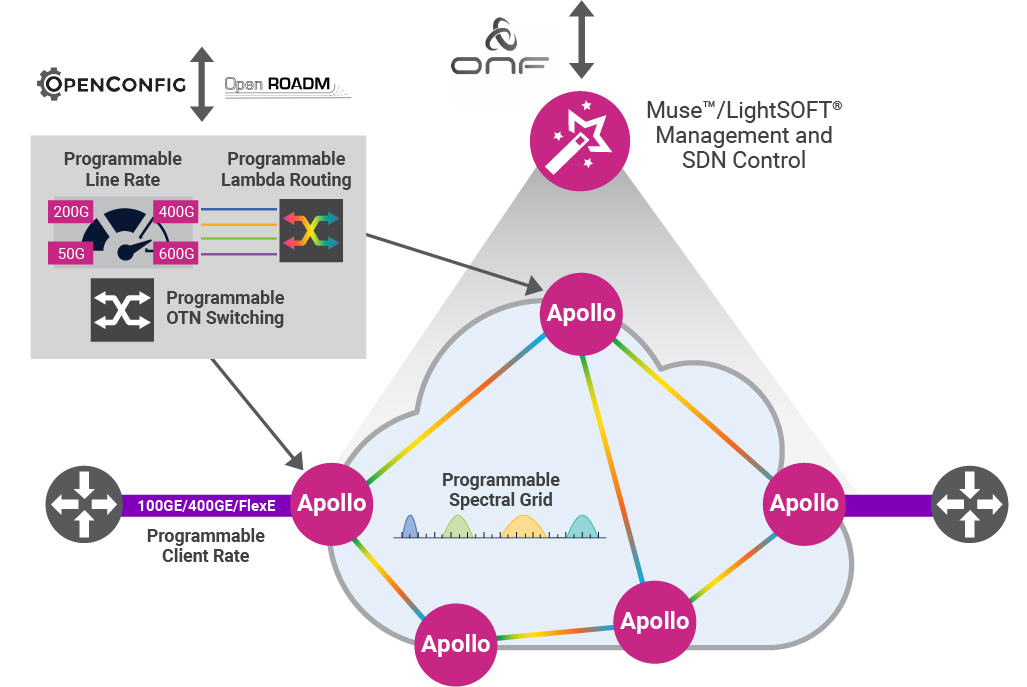
“Our ability to seamlessly deliver connectivity services to our customers over long distances is key to the success of our business,” said Koji Miyashita, President and CEO, IPS. “Ribbon’s Optical transport technology allowed us to maximize our available capacity and transmit world-class communications applications via our submarine services under the South China Sea.”
“Submarine applications must deliver extensive capacity and carry the highest level of communications services on each channel in order to realize cost efficiencies,” said Mickey Wilf, General Manager APAC and MEA Regions for Ribbon. “Our Apollo solution enables IPS to maximize capacity by leveraging dual wavelengths with programmable baud rate and modulation, in conjunction with flex grid technology.”
The solution deployed by IPS leverages Apollo’s high-performance programmable TM800 muxponder cards on Apollo 9600 series platforms to provide optimized long haul undersea connectivity for 100GbE services.
| 9504D | 9603 | 9608 | 9608D | 9624 | ||||
| Size | 1RU | 2RU | 5RU | 5RU | 15RU | |||
| Line Capacity | 1.6T | 2.4T | 6.4T | 6.4T | 19.2T | |||
| Photonics | CDC-F ROADMs, Fixed and Dynamic Amplifiers | |||||||
| Datasheet | Apollo 9504D | Apollo 9603 | Apollo 9608 | Apollo 9608D | Apollo 9624 | |||
| Image | Data Center |
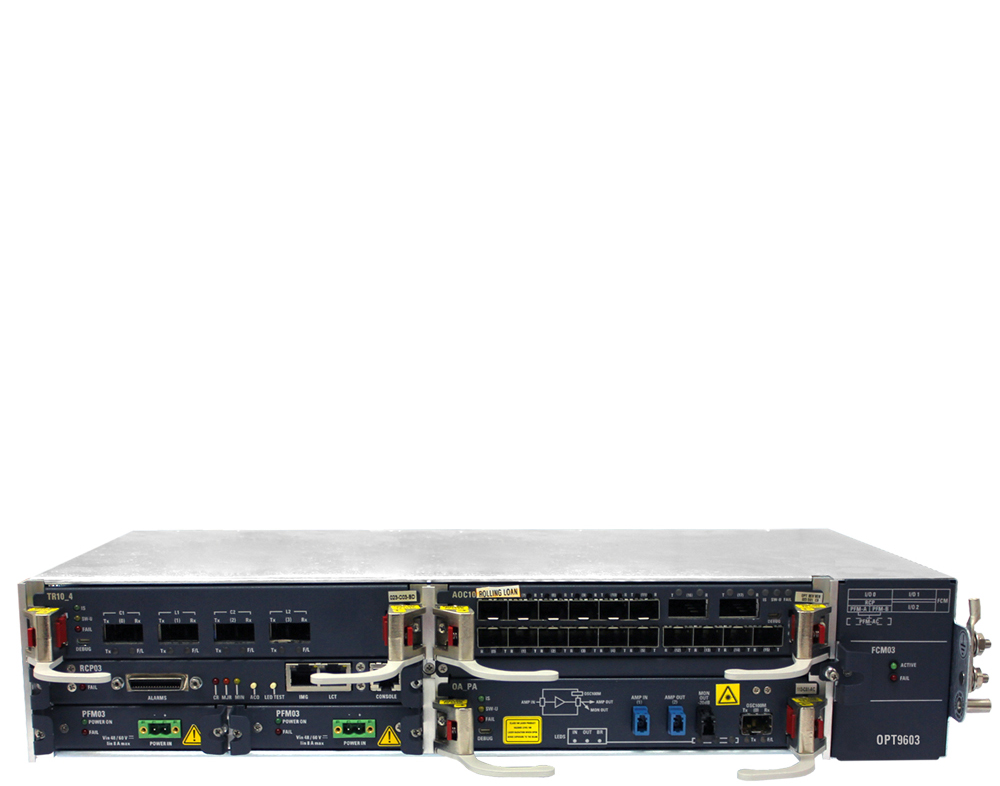 |
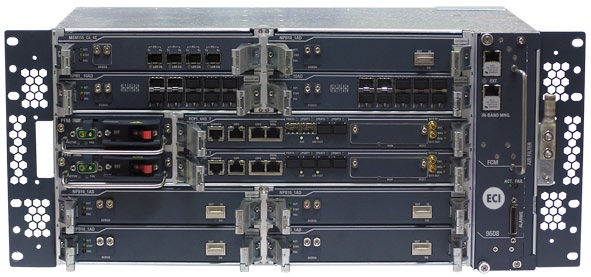 |
Data Center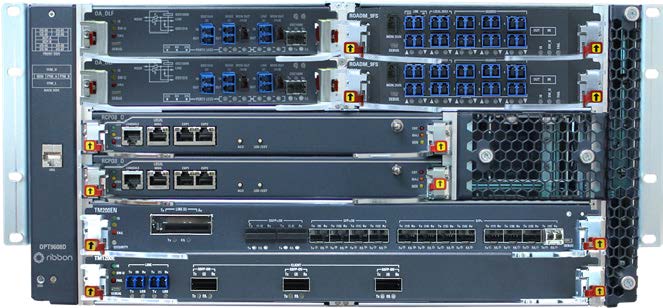 |
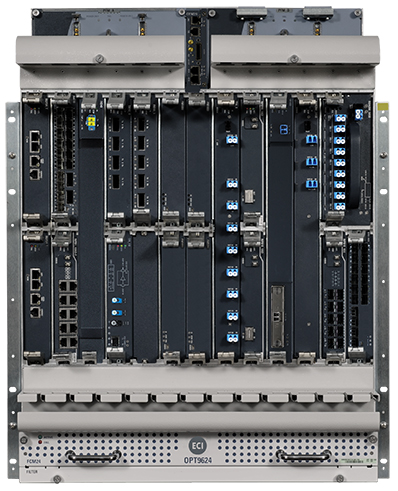 |
|||
About IPS:
IPS Inc. operates as a Carriers-of Carrier in the Philippines providing network services for local and international telecom companies, contact centers and data centers. It has international telecommunication lines connecting Manila with Hong Kong, Singapore, and many other countries. IPS is listed on the Tokyo Stock Exchange.For more information visit ipsism.co.jp/en/.
About Ribbon:
Ribbon Communications (Nasdaq: RBBN) delivers communications software, IP and optical networking solutions to service providers, enterprises and critical infrastructure sectors globally. We engage deeply with our customers, helping them modernize their networks for improved competitive positioning and business outcomes in today’s smart, always-on and data-hungry world. Our innovative, end-to-end solutions portfolio delivers unparalleled scale, performance, and agility, including core to edge software-centric solutions, cloud-native offers, leading-edge security and analytics tools, along with IP and optical networking solutions for 5G. To learn more about Ribbon visit rbbn.com.
References:
https://ribboncommunications.com/products/service-provider-products/apollo-optical-systems
Chile plans submarine cable to Antarctica
Infrastructure association Desarrollo País, Chile telecoms regulator Subtel and Magallanes region have signed an agreement on the deployment of a submarine cable between Antarctica and Chile. The agreement involves a market consultation process for the preparation of a technical, legal, economic, and financial feasibility study.
“As a government we are determined to carry out this enormous project and, in this way, contribute strategically to the concerns of the international community and to expand the development of scientific cooperation,” Chile transport and telecommunications minister Gloria Hutt said in a press release.
Earlier this year, Argentine company Silica Networks had also announced a US$ 2M investment for an Antarctic cable feasibility study that includes its subsidiaries in Brazil and Chile.
The deal paves the way for a market consultation process on the future preparation of a technical, legal, economic and financial feasibility study, said Subtel, adding that the proposed route would cover a distance of around 1,000 kilometers from Puerto Williams to King George Island.
According to Subtel, Chile’s existing infrastructure in Puerto Williams on the Tierra del Fuego archipelago gives it a clear advantage over other continents, in that the facilities already available at the corresponding landing station provide a unique opportunity for the deployment of an undersea fibre-optic cable across the Southern Ocean.
The infrastructure is part of the country’s ‘Fibra Optica Austral‘ backbone project to roll out nearly 4,622 km of fiber-optic infrastructure in the Patagonia region, allowing the construction of a high-capacity digital channel for the development of all types of activities in Antarctica.

In October 2020, Subtel announced that local operator Entel had successfully connected the town of Puerto Williams in the far south of the country to the Fibra Optica Austral (FOA) fiber optic system. Hundreds of inhabitants in the digitally isolated locality in the Tierra del Fuego archipelago can now access reliable mobile broadband services for the first time thanks to the public-private initiative between the operator and Subtel.
The aim of the FOA project is to boost telecommunications for the 300,000 Chileans who live in the underserved Patagonia region, bringing much-needed economic, tourism and trade benefits to around 30 percent of the Chilean territory. A 3,000km submarine cable is being rolled out from Puerto Montt to Puerto Williams with landings at Caleta Tortel and Punta Arenas plus a land-based stretch from Puerto Natales to Porvenir in Magallanes.
Puerto Williams is the second town to be connected to FOA after a 4G base station was activated in Caleta Tortel in the Aysen region earlier this year.
References:
https://www.bnamericas.com/en/news/chile-plans-submarine-cable-to-antarctica
https://www.telecompaper.com/news/chile-consults-on-first-undersea-cable-to-antarctica–1405703
2Africa subsea cable system adds 4 new branches
2Africa, which will be the largest subsea cable project in the world, will deliver faster, more reliable internet service to each country where it lands. Communities that rely on the internet for services from education to healthcare, and business will experience the economic and social benefits that come from this increased connectivity.

Alcatel Submarine Networks (ASN) has been selected to deploy the new branches, which will increase the number of 2Africa landings to 35 in 26 countries, further improving connectivity into and around Africa. As with other 2Africa cable landings, capacity will be available to service providers at carrier-neutral data centers or open-access cable landing stations on a fair and equitable basis, encouraging and supporting the development of a healthy internet ecosystem.
Marine surveys completed for most of the cable and cable manufacturing is underway. Since launching the 2Africa cable in May 2020, the 2Africa consortium has made considerable progress in planning and preparing for the deployment of the cable, which is expected to ‘go live’ late 2023. Most of the subsea route survey activity is now complete. ASN has started manufacturing the cable and building repeater units in its factories in Calais and Greenwich to deploy the first segments in 2022.
Egypt terrestrial crossing already completed
One of 2Africa’s key segments, the Egypt terrestrial crossing that interconnects landing sites on the Red and the Mediterranean Seas via two completely diverse terrestrial routes, has been completed ahead of schedule. A third diverse marine path will complement this segment via the Red Sea.
About MTN GlobalConnect
GlobalConnect is a Pan-African digital wholesale and infrastructure services company, and an operating company in the MTN Group. GlobalConnect manages MTN’s international and national major wholesale activities, in addition to offering reliable wholesale and infrastructure solutions for fixed connectivity and wholesale mobility solutions that include international mobile services, Voice, SMS, signalling, roaming and interconnect. The MTN Group launched in 1994 is a leading emerging market operator with a clear vision to lead the delivery of a bold new digital world and is inspired by the belief that everyone deserves the benefits of a modern connected life. Embracing the Ambition 2025 strategy, MTN is anchored on building the largest and most valuable platform business, with a clear focus on Africa. The MTN Group is listed on the JSE Securities Exchange in South Africa under the share code “MTN”.
For more information, please visit www.globalconnect.solutions – https://www.mtn.com
About stc
With its headquarter in Riyadh, stc group is the largest in the Middle East and North Africa based on market cap. stc’s revenue for 2020 amounted to 58,953million SAR (15,721 million US dollars) and the net profit amounted to 10,995 million SAR (2,932 million US dollars). stc was established in 1998 and currently has customers around the globe. It is ranking among the world’s top 50 digital companies and the first in the Middle East and North Africa according to Forbes. It focuses on providing services to enterprise and consumer customers through a fiber-optic network that spans 217,000 kilometers. stc group was among the first in MENA region to launch 5G networks and was considered one of the fastest globally in deploying 5G network as stc already deployed around 4,000 5G towers as end of 2020. stc group has 14 subsidiaries in the Kingdom, gulf and around the world, and its own 100% of stc Bahrain, 51.8% stake in stc Kuwait and 25% stake in Binariang GSM Holding in Malaysia which owns 62% of Maxis in Malaysia.
In Saudi Arabia (the group’s main operation site) stc operates the largest modern mobile network in the Middle East as it covers more than 99% of the country’s populated areas in addition to providing 4G mobile broadband to about 90% of the population across the Kingdom of Saudi Arabia. In addition to the above-mentioned, stc is a strong regional player in IoT, managed services, system integration, cloud computing, information security, big data Analytics fintech and artificial intelligence.
For more information, please visit https://www.stc.com.sa; or to follow us on Twitter: @stc , @stc_ksa
About Telecom Egypt
Telecom Egypt is the first total telecom operator in Egypt providing all telecom services to its customers including fixed and mobile voice and data services. Telecom Egypt has a long history serving Egyptian customers for over 160 years maintaining a leadership position in the Egyptian telecom market by offering its enterprise and consumer customers the most advanced technology, reliable infrastructure solutions and the widest network of submarine cables. Aside from its mobile operation “WE”, the company owns a 45% stake in Vodafone Egypt. Telecom Egypt’s shares and GDRs (Ticker: ETEL.CA; TEEG.LN) are traded on The Egyptian Exchange and the London Stock Exchange. Please refer to Telecom Egypt’s full financial disclosure on ir.te.eg
For more information, email: [email protected]
…………………………………………………………………………………………
References:
https://www.orange.com/en/newsroom/press-releases/2021/new-branches-2africa-subsea-cable-system
Sparkle to Build Blue and Raman Submarine Cable Systems in Collaboration with Google Cloud
Each cable system will contain 16 fiber optic pairs while adhering to the innovative concepts of open cable, supporting multiple fiber tenants, and open landing station, enabling competitive access to the cable termination points, the two systems set a new reference in terms of diversification, scalability and latency throughout these geographies.
Blue will be deployed along a new northbound route in the Mediterranean, crossing the Strait of Messina, rather than following the traditional route through Sicily Channel.
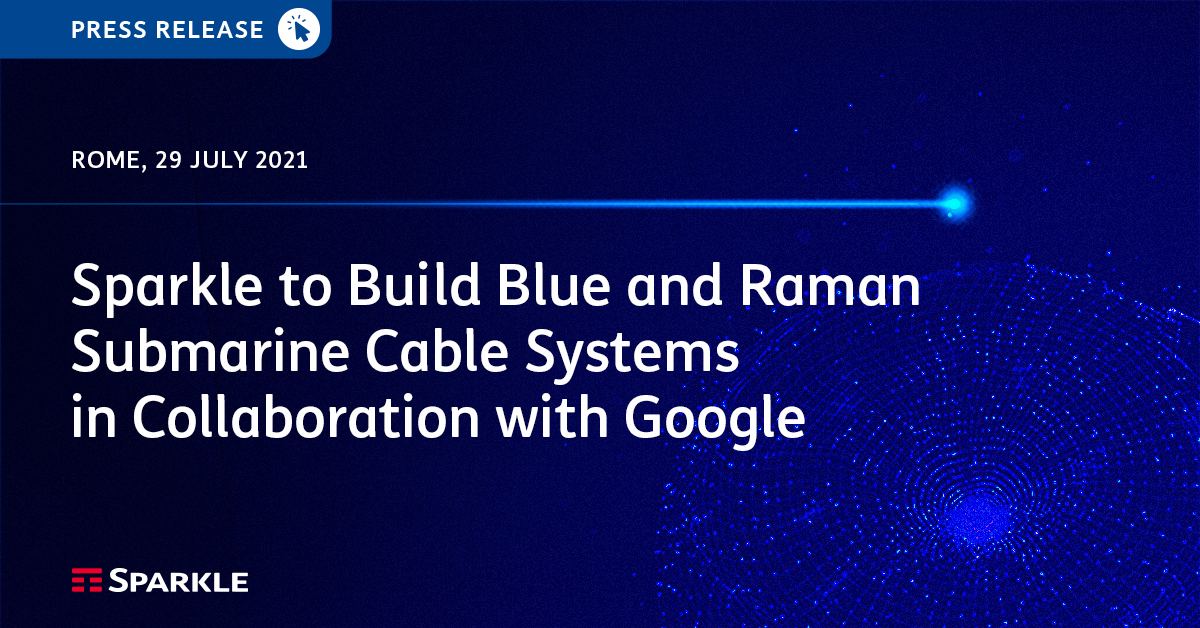
As a result, Internet Service Providers, Carriers, Telecom Operators, Content Providers, Enterprises and Institutions will benefit from high-speed Internet and state-of-the-art capacity services with unparalleled diversity and performances.
Within the Blue System, BlueMed submarine cable is now Sparkle’s own private domain sharing its wet components with four additional fibre pairs and an initial design capacity of more than 25 Tbps per fibre pair, and is extended up to Jordan (Aqaba) with additional private branches into France (Corsica), Greece (Chania – Crete), Italy (Golfo Aranci – Sardinia and Rome), Algeria, Tunisia, Libya, Turkey, Cyprus and more in the future.
BlueMed flexible design allows both seamless express connections throughout the Mediterranean Basin, with unprecedented latency and spectral efficiency, and sophisticated regional subsystems, based on specific customer requirements.
In addition, Sparkle’s Genoa Open Landing Platform is set to become the alternative priority access for other upcoming submarine cables looking for a diversified entry to Europe, backhauled to the Milan’s rich digital marketplace, and thus a new reference gateway between Africa, the Middle East, Asia and Europe.
Blue and Raman are expected to be ready for service in 2024, with the Tyrrhenian part of BlueMed planned to be operational already in 2022.
“We are extremely proud to bring our collaboration with Google to the next level with this cutting-edge intercontinental infrastructure”, comments Elisabetta Romano, CEO of Sparkle. “With Blue and Raman Submarine Cable Systems, Sparkle boosts its capabilities in the strategic routes between Asia, Middle East and Europe and the enhanced BlueMed strengthens our presence in the greater Mediterranean area”
Google & Subcom to build Firmina cable connecting U.S. and South America
Cable maker/installer SubCom said it has teamed up with Google to build and deploy a new undersea cable connecting North and South America. The cable, named ‘Firmina’ after Brazilian abolitionist and author Maria Firmina dos Reis, will run from the East Coast of the United States to Las Toninas in Argentina, with additional landings in Praia Grande, Brazil and Punta del Este, Uruguay. Designed as a twelve-fiber pair trunk, Firmina will be Google’s second proprietary U.S. to South America cable designed to improve access to the company’s services for users in the region.
SubCom said Firmina will be the world’s longest cable capable of maintaining operations with single-end feed power, in the event of a far-end fault. Manufacture of the cable and equipment will take place at SubCom’s recently-expanded manufacturing campus in Newington during 2021 and early 2022, with main lay installation operations scheduled for summer 2022. The system is expected to be ready for service by the end of 2023.
In a blogpost, Google Cloud’s vice-president of global networking, Bikash Koley, said:
“As people and businesses have come to depend on digital services for many aspects of their lives, Firmina will improve access to Google services for users in South America. With 12 fiber pairs, the cable will carry traffic quickly and securely between North and South America, giving users fast, low-latency access to Google products such as Search, Gmail and YouTube, as well as Google Cloud services.
Connecting North to South America, the cable will be the longest ever to feature single-end power feeding capability. Achieving this record-breaking, highly resilient design is accomplished by supplying the cable with a voltage 20pc higher than with previous systems.”
SubCom’s CEO, David Coughlan, said the partnership with Google will “supply a high-speed, high-capacity undersea cable system that will encompass some of the most advanced transmission technologies in the world.”

Source: Google
…………………………………………………………………………………………………………………………………………..
Firmina will join other Google cables in the region, including the 10,500 kilometer Monet system running from Boca Raton in the US to Fortaleza and Praia Grande in Brazil, the Tannat (Brazil-Uruguay) cable and the Junior cable connecting Rio de Janeiro to Santos in Brazil.
Google is also working with fellow tech giant Facebook on two new subsea cables that will connect North America and south-east Asia.
This came after another Google-Facebook subsea cable was blocked. Plans for the Pacific Light Cable Network were cancelled late last year due concerns from the U.S. government about direct communications links between the U.S. and Hong Kong.
………………………………………………………………………………………………………………………………….
About SubCom:
SubCom is the leading global partner for today’s undersea data transport requirements.
SubCom designs, manufactures, deploys, maintains, and operates the industry’s most reliable
fiber optic cable networks. Its flexible solutions include repeaterless to ultra-long-haul, offshore
oil and gas, scientific applications, and marine services. SubCom brings end-to-end network
knowledge and global experience to support on-time delivery and meet the needs of customers
worldwide. To date, the company has deployed over 200 networks – enough undersea cable to
circle Earth more than 17 times at the equator.
Echo and Bifrost: Facebook’s new subsea cables between Asia-Pacific and North America
Facebook has revealed plans to build two new subsea cables between the Asia-Pacific region and North America, called Echo and Bifrost. The social media giant also revealed partnerships with Google as well as Asian telecoms operators for the project.
Although these projects are still subject to regulatory approvals, when completed, these cables will deliver much-needed internet capacity, redundancy, and reliability. The transpacific cables will follow a “new diverse route crossing the Java Sea, connecting Singapore, Indonesia, and North America,” and are expected to increase overall transpacific capacity by 70%.
Facebook says Echo and Bifrost will support further growth for hundreds of millions of people and millions of businesses. Facebook said that economies flourish when there is widely accessible internet for people and businesses.
Echo and Bifrost be the first transpacific cables through a new diverse route crossing the Java Sea. Connecting Singapore, Indonesia, and North America, these cable investments reflect Facebook’s commitment to openness and our innovative partnership model. The social media company works with a variety of leading Indonesian and global partners to ensure that everyone benefits from developing scale infrastructure and shared technology expertise.
Facebook will work with partners such as Indonesian companies Telin and XL Axiata and Singapore-based Keppel on these projects.

Image Credit: Facebook
………………………………………………………………………………………………..
Kevin Salvadori, VP of network investments at Facebook, provided further details in an interview with Reuters. He said Echo is being built in partnership with Alphabet’s Google and XL Axiata. It should be completed by 2023. Bifrost partners include Telin, a subsidiary of Indonesia’s Telkom, and Keppel. It is due to be completed by 2024.
Aside from the Southeast Asian cables, Facebook was continuing with its broader subsea plans in Asia and globally, including with the Pacific Light Cable Network (PLCN), Salvadori said.
“We are working with partners and regulators to meet all of the concerns that people have, and we look forward to that cable being a valuable, productive transpacific cable going forward in the near future,” he said.
Indonesia
Facebook noted that Echo and Bifrost will complement the subsea cables serving Indonesia today. These investments present an opportunity to enhance connectivity in the Central and Eastern Indonesian provinces, providing greater capacity and improved reliability for Indonesia’s international data information infrastructure. Echo and Bifrost complement the subsea cables serving Indonesia today, increasing service quality and supporting the country’s connectivity demands.
This is all part of Facebook’s continued effort to collaborate with partners in Indonesia to expand access to broadband internet and lower the cost of connectivity. Facebook has partnered with Alita, an Indonesian telecom network provider, to deploy 3,000 kilometers (1,8641 miles) of metro fiber in 20 cities in Bali, Java, Kalimantan, and Sulawesi. In addition, we are improving connectivity by expanding Wi-Fi with Express Wi-Fi.
While 73% of Indonesia’s population of 270 million are online, the majority access the web through mobile data, with less than 10 percent using a broadband connection, according to a 2020 survey by the Indonesian Internet Providers Association. Swathes of the country, remain without any internet access.
Singapore
In Singapore, Echo and Bifrost are expected to provide extra subsea capacity to complement the APG and SJC-2 subsea cables. Building on Facebook’s previously announced Singapore data center investments, Echo and Bifrost will provide important diverse subsea capacity to power Singapore’s digital growth and connectivity hub. Singapore is also home to many of Facebook’s regional teams.
The Asia-Pacific region is very important to Facebook. In order to bring more people online to a faster internet, these new projects add to Facebook’s foundational regional investments in infrastructure and partnerships to improve connectivity to help close the digital divide and strengthen economies.
……………………………………………………………………………………………………………………………………
References:
Advancing connectivity between the Asia-Pacific region and North America
https://www.reuters.com/article/us-facebook-internet-southeastasia-idUSKBN2BL0CH
Equinix and Vodafone to Build Digital Subsea Cable Hub in Genoa, Italy
Equinix and Vodafone have announced plans to build a new subsea cable hub in the northern Italian port of Genoa, to be called GN1.
Under the deal, Vodafone will land the 2Africa cable system at Genoa and use Equinix’s GN1 facility as a strategic interconnection point for the subsea cable system, with a connection on to Milan and the rest of Europe.
The partners said the EUR 1 billion 2Africa cable will be ready for service in 2023, a 37,000 km system circumnavigating the continent of Africa and directly connecting 16 countries in Africa to Europe and the Middle East, with a design capacity of up to 180 Tbps on key segments. To facilitate interconnection, GN1 will have a direct fiber connection to ML5, the soon-to-be opened Equinix flagship data center in Milan.
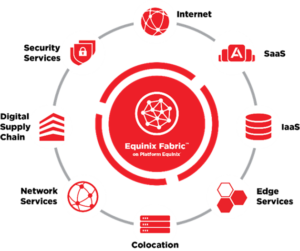
The newly-announced GN1 hub will be Genoa’s first carrier-neutral data center, offering customers secure colocation and interconnection services, as well as the ability to directly tap into Equinix’s digital ecosystems and colocation facilities in Milan. It will provide a capacity of 150 cabinet equivalents, and colocation space of around 560 square meters.
The combination of 2Africa’s landing in the new Genoa site and the direct connection to Milan means GN1 will offer a new, complementary and diverse alternative option for the Mediterranean region. As Genoa’s first carrier-neutral data center, GN1 will offer customers secure, resilient colocation and interconnection services, as well as the ability to directly leverage Equinix’s digital ecosystems and colocation facilities in Milan. It will provide a capacity of 150 cabinet equivalents, and colocation space of approximately 6,000 square feet (560 square meters).
2Africa is expected to deliver more than the total combined capacity of all subsea cables serving Africa today, with a design capacity of up to 180 Tbps on key segments of the system. This will be vital to help build a digital society ready for services that require a large amount of data transfer, such as cloud computing or video.
The need for robust digital infrastructures can be seen across the world, and Africa is no exception. The continent is experiencing a critical period of digital transformation and development of its digital economy. In the next few years, digital technologies are expected to be a factor in improving African people’s quality of life and driving economic development in the region.
The GSMA predicts that the number of mobile internet users in Africa will continue to grow rapidly, primarily due to the popularization of smartphones and lack of fixed-line infrastructure, which has led to a boom of new services such as mobile payment, instant messaging, online streaming media and short video.
Highlights/Key Facts:
- The 2Africa project includes partners from China Mobile International, Facebook, MTN GlobalConnect, Orange, stc, Telecom Egypt, Vodafone and WIOCC. The cable system will underpin digitization across the African continent by bringing greater capacity, quality and availability of internet connectivity between Africa and the rest of the world.
- Responsibility for landing the 2Africa cable is split between the 2Africa parties depending on location. Vodafone is leading all European landings, along with selected other sites.
- As the home of the interconnected cloud®, Equinix is a natural destination for subsea cable systems and a gateway to new opportunities for system operators and their customers. Equinix hosts over 2,950 cloud and IT service providers on its global platform and can support subsea cable systems in 40 subsea-enabled metros around the world. When subsea cable systems are linked to cloud and content ecosystems on Platform Equinix®, users can access a variety of scalable cloud services almost anywhere they need to be. And because Equinix is carrier-neutral, subsea system operators can offer excess network capacity to customers who otherwise couldn’t as quickly or efficiently reach the markets being served by new subsea architectures.
- GN1 is being built in line with global environmental standards and will contribute to a portfolio of some of the most energy-efficient data centers in the world. Indeed, GN1 is expected to utilize 100% renewable energy. As the world’s digital infrastructure company, Equinix is working to protect, connect and power a more sustainable digital world by proactively addressing its ESG impacts. Equinix recently scored the highest rating on its first response to the DPP’s Committed to Sustainability survey, and joined European cloud infrastructure and data center providers and European trade associations to form the Climate Neutral Data Centre Operator Pact and Self-Regulatory Initiative.
- ML5 will be a new flagship International Business Exchange™ (IBX®) data center in Milan that offers state-of-the-art colocation, as well as a host of advanced interconnection services—including Equinix Fabric™ and Equinix Internet Exchange®—enabling virtual interconnections to some of the largest cloud providers in the world, such as Amazon Web Services, Microsoft Azure, Oracle Cloud Infrastructure and Google Cloud. When opened, ML5 will provide capacity of 500 cabinet equivalents and colocation space of approximately 15,000 square feet (1,400 square meters).
- The Global Interconnection Index (GXI) Volume 4, a market study recently published by Equinix, forecasts that overall interconnection bandwidth—the measure of private connectivity for the transfer of data between organizations—will achieve a 45% compound annual growth rate (CAGR) from 2019 to 2023, globally. The expected growth is driven by digital transformation, and specifically by greater demands from enterprises extending their digital infrastructure from centralized locations to distributed edge locations.
Quotes:
- Nick Gliddon, Director, Vodafone Carrier Services:
“The 2Africa project is vitally important to improving connectivity between Europe, Africa and the Middle East, and will also improve intra-European connectivity. By linking Spain and Portugal directly to Genoa and Milan, the system will avoid fiber bottlenecks that naturally occur between France and Spain, further strengthening Vodafone’s Gigabit networks.” - Emmanuel Becker, Managing Director, Italy, Equinix:
“Italy is an important growth market for Equinix in EMEA, as it’s a strategic interconnection point for the region and beyond. We are working to give our customers improved access to the expanding global subsea cable network, so they have increased opportunities to expand internationally. Thanks also to the opening of our new data center in Milan, ML5, we are creating an interconnected metro area where customers can connect with strategic business partners in Italy and across the world.” - Eugene Bergen Henegouwen, President, EMEA, Equinix:
“I am thrilled we are adding a new metro to our EMEA portfolio. Equinix’s Genoa site provides a great landing hub for subsea cable operators, whilst at the same time boosting the digital ecosystems at our recently announced Milan flagship, ML5. Equinix continues to focus on expanding its position as a global connectivity service provider. Our commitment is always to support the increasing demands we’re seeing from companies globally to accelerate their digital transformation. We’re helping businesses connect to everything they need to succeed, and will continue to do so.” - Marco Bucci, Mayor of Genoa City:
“We are very excited to be the host city for the new subsea hub GN1, that will serve as a landing point for the 2Africa cable in the north of Italy. Genoa is known for the central role it has played in maritime trade for many centuries. Thanks to GN1, the city will become one of the main digital harbors of Europe, and play a key role in global data transfer.”
References:
https://www.telecompaper.com/news/equinix-and-vodafone-announce-genoa-hub-for-subsea-cables–1373724
https://blog.equinix.com/blog/2021/01/15/equinix-submarine-cable-momentum-is-accelerating/
DoJ: Google to operate undersea cable connecting U.S. and Asia
The U.S. Department of Justice announced Wednesday that it has approved Google’s request to use part of an undersea cable connecting the US and Asia via Taiwan. Google agreed to operate a portion of the 8,000-mile Pacific Light Cable Network System between the US and Taiwan, while avoiding the leg of the system extending to Hong Kong.
Google and Facebook helped pay for construction of the now completed undersea cable, along with a Chinese real estate investor. U.S. regulators had previously expressed national security concerns about the Chinese investor, Beijing-based Dr. Peng Telecom & Media Group Co.
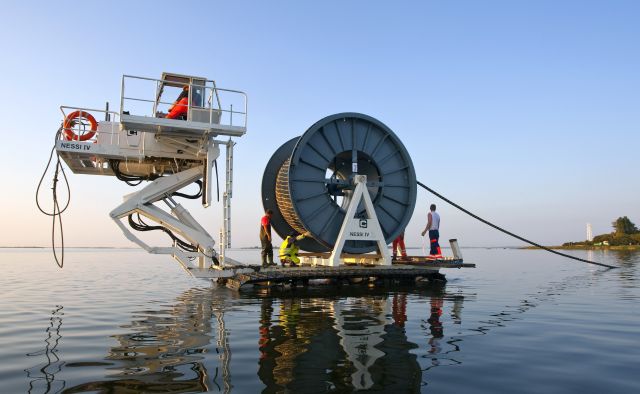
Google, Facebook and telecom and undersea infrastructure developer TE SubCom and PLDC (Pacific Light Data Communication Co. Ltd.) are teaming up to build a 120 Terabits per second (Tbps), 12,800 km subsea cable that will connect Los Angeles with Taiwan, but exclude Hong Kong.
…………………………………………………………………………………………………..
The DoJ granted a six-month authorization for using the cable after Google emphasized “an immediate need to meet internal demand for capacity between the US and Taiwan” and that without the requested temporary authority, it would likely have to seek alternative capacity at “significantly higher prices.”
After discussions with Google representatives, the DoJ concluded that the obligations undertaken by Google would be sufficient to preserve their abilities to enforce the law and protect national security. Under the terms of the security agreement, Google has agreed to a range of operational requirements, notice obligations, access and security guarantees, as well as auditing and reporting duties, among others.
Google also committed to pursuing “diversification of interconnection points in Asia,” as well as to establish network facilities that deliver traffic as close as practicable to its ultimate destination. This reflects the views of the US government that a direct cable connection between the US and Hong Kong “would pose an unacceptable risk to the national security and law enforcement interests of the United States”, the DoJ said.
More information concerning the license application and the US Justice Departments’ response is available here.
……………………………………………………………………………………………………………………………………………………….
The U.S. government decision to exclude Hong Kong (see Update below) from a trans-Pacific cable was “severe blow” to the city as a telecom hub, a key industry figure said Thursday.
The DOJ said “a direct connection between the U.S. and Hong Kong would pose an unacceptable risk” to national security and law enforcement interests.
Charles Mok, the IT industry representative in the Hong Kong Legislative Council, said the decision was “not a surprise.”
It had been public knowledge for at least six months that the FCC held such views about Hong Kong and was delaying approval of the cable.
More than a month ago, Facebook and Google had amended their applications, excluding Hong Kong and terminating the cable in Taiwan, Mok pointed out.
“It is a severe blow to Hong Kong’s status as a hub for telecommunications and underseas cable in the region,” he said.
“The obvious reasons – behind what the US claims to be concerns over their national interest – must be the widely perceived deterioration of Hong Kong’s One Country Two Systems, rule of law, freedom of information and the media, and the increasing interference from China.
June 18, 2020 Update:
In a press release Wednesday, “Team Telecom” recommended the FCC deny an application to connect the Pacific Light Cable Network (PLCN) subsea cable system between the US and Hong Kong.
FCC commissioners appear poised to accept the recommendation. “I’ll reserve judgment for now, but the detailed filing raises major questions about state influence over Chinese telecoms. In this interconnected world, network security must be paramount,” tweeted Democratic FCC Commissioner Geoffrey Starks.
Team Telecom – officially the Committee for the Assessment of Foreign Participation in the United States Telecommunications Services Sector – is an organization created by President Trump in April. It’s chaired by Trump’s attorney general and includes his secretaries of Homeland Security and Defense. As the Department of Justice explained, Team Telecom formalizes a process that has existed for years, but which will “benefit from a transparent and empowered structure.”
References:
https://www.wsj.com/articles/u-s-allows-google-internet-project-to-advance-only-if-hong-kong-is-cut-out-11586377674 (on-line subscription required)
Indigo Cable System to boost connectivity in SE Asia & Australasia when it launches later this year
The Indigo Consortium has confirmed that it has landed the Indigo Cable System, which will link Australia’s East and West coasts, in Coogoo Beach, Sydney. In September, operators launched the Indigo Cable System from Floreat Beach in Perth, on Australia’s West Coast. Once complete, the Indigo Cable System will connect Australia’s East and West Coasts and then provide onward connectivity to a number of high profile destinations in South East Asia, including, Singapore and Jakarta, Indonesia.
The 9,200km Indigo Cable System will be comprised of two fiber pairs and will be able to support data transfers of 36Tbps. The Indigo Cable Consortium is comprised of AARNet, Google, Indosat Ooredoo, Singtel, SubPartners, and Telstra.
“The landing of INDIGO Central cable by Optus is a landmark development which will boost Australia’s communications ecosystem with much-needed high-speed capacity and network diversity. Together with INDIGO West, the next generation INDIGO Central data superhighway will enhance Singtel and Optus’ subsea networks, creating a cable ring connecting Australia to Singapore, through Southeast Asia, across the Pacific and back to Australia,” said Singtel’s Vice President, Carrier Services, Group Enterprise Ooi Seng Keat.
“This new data superhighway will complement our existing global links to Asia, US, Europe, Australia and the Middle East and allow Singtel and [Australian subsidiary] Optus to meet the growing demand for bandwidth-intensive applications as well as boost network diversity and resilience.”
Telstra head of North Asia and global wholesale Paul Abfalter added that the cable will connect to the operator’s extensive terrestrial infrastructure for onward connectivity in Australia.
“Our vast subsea network is a key part of our international growth strategy and we will continue to invest in additional capacity to meet the increasing demand for data and maintain our network leadership in the Asia-Pacific region.” he said.
References:
https://subpartners.net/indigo.html
https://www.submarinenetworks.com/systems/asia-australia/indigo
https://www.totaltele.com/501509/Singtel-Telstra-and-partners-land-Indigo-Cable-in-Sydney
https://www.telecomasia.net/content/indigo-cable-lands-western-australia
My story: Connecting Australians to the world, from the ’80s to the ‘Tera Era’

